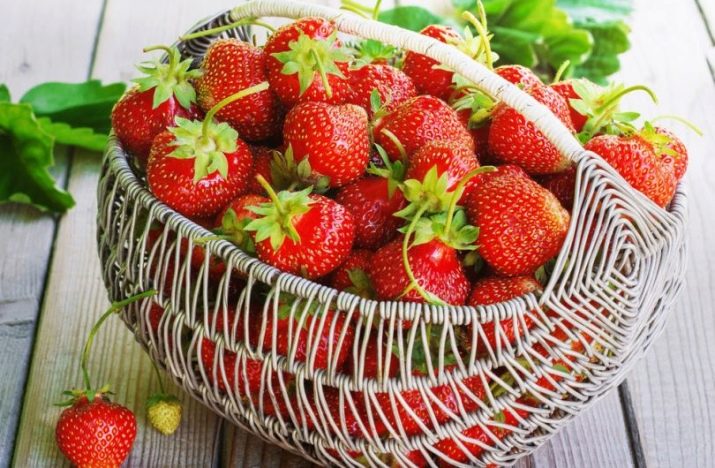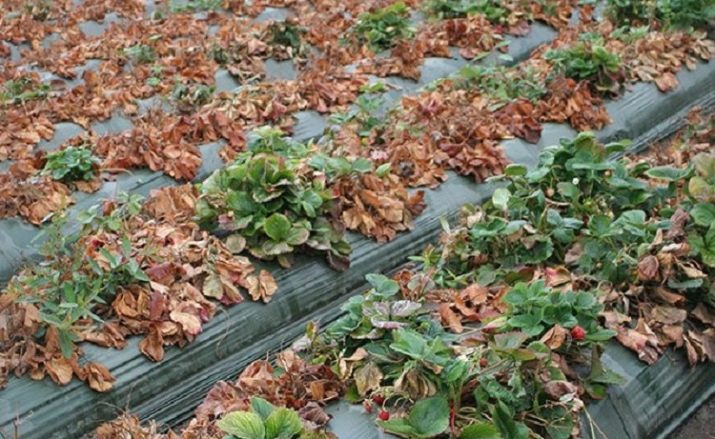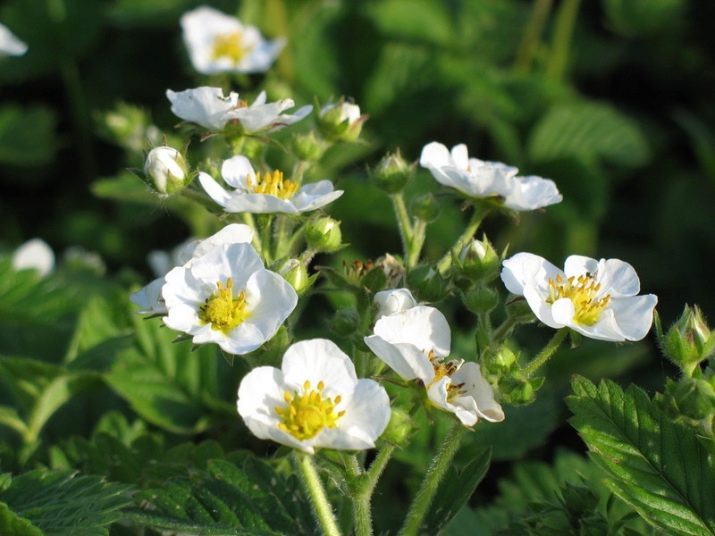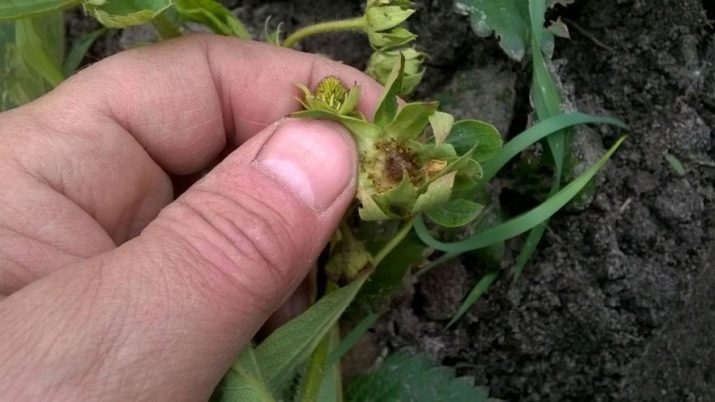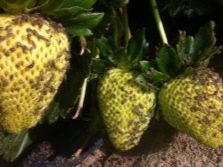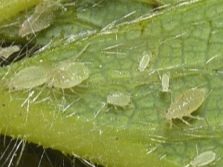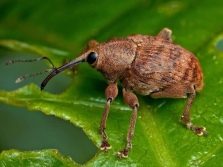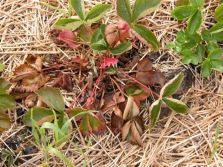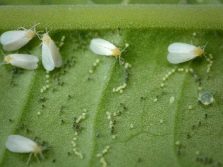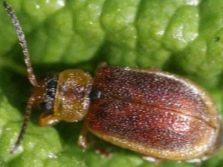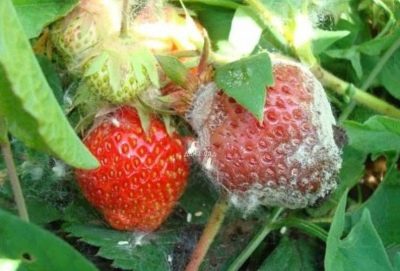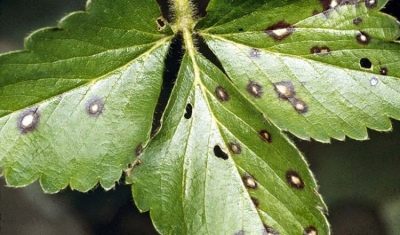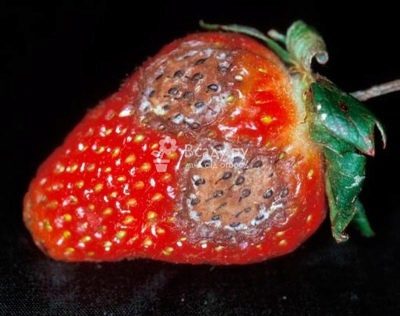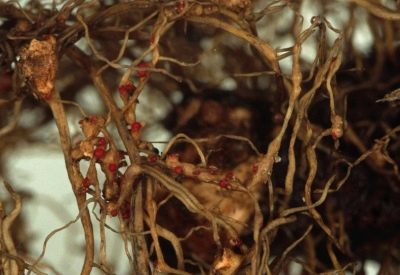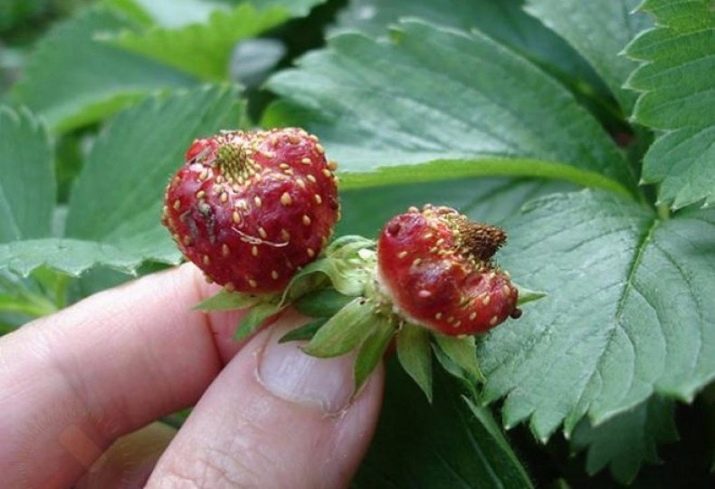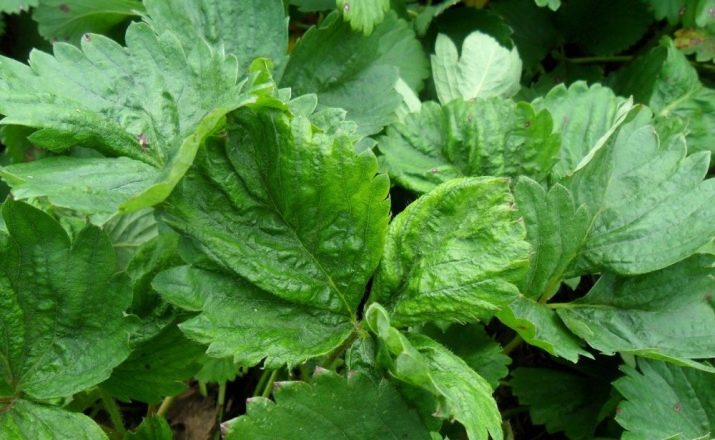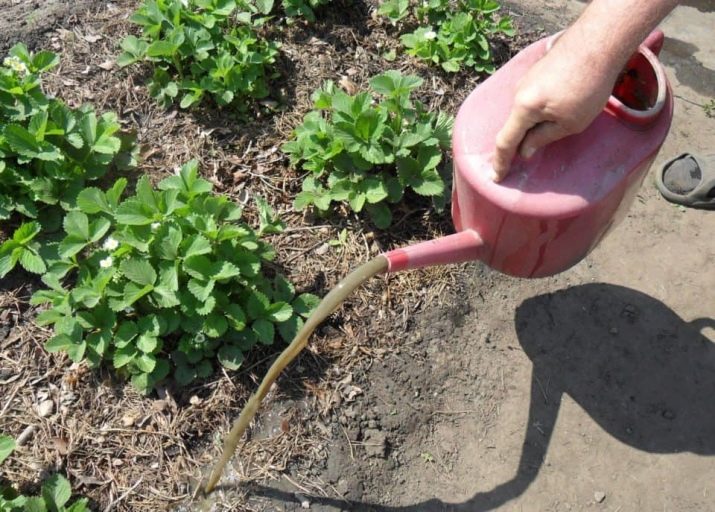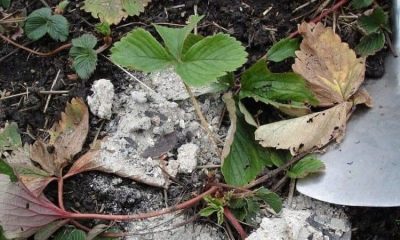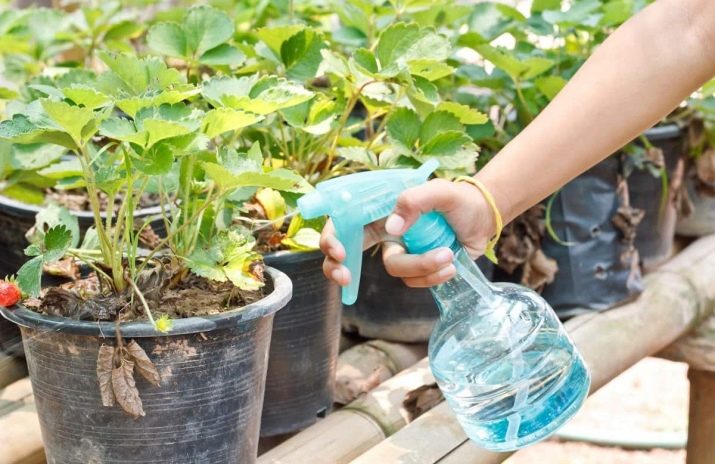How to protect strawberry leaves from diseases, who can eat them and what to do about it?
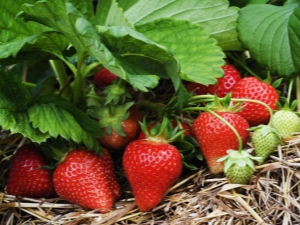
Strawberries or strawberries are the berries that are most popular among a huge number of gardeners and amateur gardeners. Over the past decades, unique varieties have emerged that have outstanding taste qualities.
Foliage diseases and their treatment
These types of strawberries possess:
- Frost resistance.
- Good resistance to pests.
- Excellent yield.
It is very important to be able to protect the crop of berries from pests, which exist in great numbers.
You should know:
- Symptoms of strawberry damage.
- What protective measures should be applied.
- What is the prevention.
Ailments can be expressed in various forms. Often there are the same signs that can characterize different diseases from metabolic disorders and lack of moisture, to defeat by a weevil or aphid. The first and most important sign is the change in the color of the leaves and the shape of the fruit.
If the berries are small, they dry out on a branch - this first of all indicates a lack of water. Strawberry is a heat-loving plant that loves an abundance of sunlight and moisture, if one of these components is lacking, then it becomes noticeable after a short time. In such situations it is recommended to revise the irrigation schedule, to make it more private.
If there are no berries on the bushes, then this indicates that the fathoms belong to the category of “weedy”. On such plants does not appear any ovaries, there are only barren flowers. Often in one or another region of Russia there is a cold spring, the plants can be damaged by exposure to negative temperatures.
It also happens that with the command of the ovary almost immediately begins their drying. The reason for this may be the formidable enemy of strawberries - weevil. Extremely dangerous insect (bug), which can destroy the crop by 98%.
The female beetle lays in egg buds, an incubation period takes place, after the appearance of offspring, the bud will be eaten by the “younger generation”. There is a similar phenomenon in the first half of summer. Weevil eats leaves and roots with pleasure. Around the world there is a huge number of this insect family - 50 thousand species.
It is necessary to take preventive measures so that the situation is not out of control.
The leaves quickly turn yellow, darken and wither. Perhaps the plants get too much UV radiation, the sun's rays “burn” the foliage.
If there is not enough magnesium in the soil, the foliage is covered with granular specks of yellowish-gray color.
If there is not enough iron, then a yellow color is also formed between the veins. The yellowness of the leaves can be triggered by the vital activity of harmful insects, for example, such as:
- Tick.
- Aphids.
- Weevil.
If the strawberry leaves turn red, then turn brown, this indicates a deficiency of potassium.
Often the leaves in July are covered with red bloom, the edges curl, becomes shriveled. Reason: the bushes are planted too close to each other.
If the edges of the leaves become rusty, drying up, wrapped up, then they were struck by pests:
- Fitovtoroz.
- White-winged butterfly.
- Strawberry leaf beetle.
If the plantation is attacked by a tick, then many leaves become hard, coarse, curl up and turn black.
If the fruit has the wrong configuration, the cause is boron deficiency.
Cold weather is also a serious factor, the receptacle of the plant can be damaged by negative temperatures.
Most often strawberries are affected by fungus, mosaic spot and witch’s broom are second in distribution. With such misfortunes as “broom” or “spotting” nothing can be done, the plant must be disposed of promptly, so that no further infection occurs.
White rot is also a very common ailment. Leaves appear in various sizes of light green “blob”, gradually they begin to decompose.Sometimes the leaves and berries envelop the white pale cover, similar to talcum powder.
White rot does not occur in greenhouses, in the open air, if you cover the crop with film, that is, hope that the infection will not “catch” the crop.
Gray rot covers shrubs with a grayish rust. Such a "powder", there is a huge amount, even small clouds are formed, which scatter around the site. The disease can spread with the speed of a forest fire, if nothing is done, the crop will be destroyed by 99%.
Strawberry varieties ripening early and not afraid of grayish rot:
- "Ruby Pendant".
- "New" and many others.
White spot fungus (Ramulariasis) appears at the end of the warm season. All foliage is covered with reddish specks, wrinkling appears on the leaves, the spots increase in size, turn white, the border of the leaves begins to dry out. In the end, the leaves dry up, the fruits are also affected. They should not be eaten.
Pests and disposal of them
Anthracnose is a dangerous fungus that eats plants weakened by nutrient deficiencies. Spores are transmitted through insects or wind. Strawberry varieties such as are not affected by this ailment:
- "Pelican" and "Idea".
- "Pegan" and "Daver".
Berries and leaves are “painted” with gray-brown stains, then on the place of individual spots on the berries appear small sores, which increase in size. The whole bush eventually dries and dies. Depressed spots on berries are the signature “handwriting” of anthracosis, which can be destroyed by means of:
- "Fitosporin".
- "Topsinom-M".
- "Hamair".
Potassium humate should also be added to chemicals. Treatment from anthracosis is done at least three times per season. The drugs are also very good:
- "Acrobat".
- "Fast".
- "Fundazol".
Strawberry nematode is a formidable enemy, the appearance of which can be provoked by diseased seedlings. Before planting, it is necessary to rinse them well under high pressure of water (to make a shower of Charcot), this eliminates the larvae. Before planting at the bottom of the hole put a teaspoon of lime.
If a nematode appears on the plantation, then the crop of the plant should be uprooted and burned.
Determining nematodes is not difficult:
- Plants become fragile.
- The nodes on the trunks are increasing.
- Flowering disappears.
- Berries are becoming a strange configuration.
- In the roots of the plant, small white worms are noticeable (no more than a millimeter in size).
To eliminate the nematode, the site should be sprayed three times per season with tinctures made from dandelions and tops of tomato.
The caterpillar of the butterfly-worm, measuring only 7-9 mm, weaves the web and envelops the leaves and berries in a cocoon. The parasite eats the leaves, if we allow further reproduction of these insects, the number of leaves will noticeably decrease. Plants should be treated with infusion of various herbs, as well as ash. From chemistry use:
- "Altar".
- "Inta-CM".
Spraying should be done during the formation of buds, as well as after harvest
Preventive measures
Factors that actively contribute to the spread of infection in the beds:
- Lack of lighting.
- Landing landing.
- High percentage of moisture.
- Nonsaturation.
The most common parasite on strawberry plantations is the strawberry mite.
It has a microscopic size, it is not easy to see. The result of the "work" of the pest is shriveled, mutilated leaves, on which greasy spots appear.
Tick breeds (up to 6 generations per season), if there are fifty individuals in the area, then in September the number of colonies will exceed one million. If summer is cold and rainy, then a real holiday begins for the tick. Before planting, the seedlings should be washed with hot water (+47 degrees), then rinsed with cold water (+8 degrees).
After the fruit has passed, on a sunny hot day, the beds are covered with black film, and a thermometer is placed under it.Upon reaching a temperature of +58 degrees, the film is removed. Then the foliage is cut and burned. In the spring beds are treated with hot water (not below +62 degrees).
Universal remedy is an infusion of onion peel. 220 grams is enough for a bucket of water. Infusion periodically watered culture (at least four times per season).
Very dangerous disease, which is called gray rot, it spreads very quickly. As a preventive measure, bushes should be treated with infusions based on onions or garlic. The following compounds are actively used:
- "HOM".
- "Thiram."
- "Figon".
They begin to process plants as soon as the buds are swollen. Do not forget about the mulching, the berries should not touch the ground.
It is necessary to thin out more often the culture, removing the spoiled fruit. Watering is not always urgently needed. The soil, too, sometimes should rest from moisture. It is sometimes useful to cultivate the earth with potassium permanganate, pour ash.
It is necessary to feed from this mixture: only 2.1 grams of boric acid and only 25 drops of iodine are added to a bucket of water.
If the leaves dry, most likely, the cause of this can be a fungal disease, for example, late blight. It is also possible that a whitefly and a strawberry leaf beetle bred on the site. The following compounds are very effective for fighting rot:
- "Derosal."
- "Horuss".
- "Ballet".
Each package contains guidance on how to dilute a particular chemical. You need to read them carefully. It is strictly forbidden to apply chemical compounds for a fortnight before fruiting.
Often experienced gardeners plant onions, garlic smells of these crops deter pests. Every decade, plants are treated with bushes with a solution of mustard or a mixture made from pepper (red). The soil is sprinkled with wood ash.
All of these substances are quite effective, they should only be used within reasonable limits, not to overdo it with concentration.
Often also used "Aktelik" - is an effective drug for the elimination of weevils. 2.5 ml of the substance is enough for two liters of water; this solution is enough for ten square meters of crops. Repeated spraying should be done in seven days. It is strictly not recommended to use both Bordeaux and Aktelik at the same time.
Folk remedies in the fight against the weevil are also very effective. To get rid of this annoying pest, make a solution of laundry soap and mustard, add a little ash. Blend for two days and spray strawberries with a spray bottle. If a misfortune happened, the weevil firmly settled on strawberries, then it is sprayed:
- "Intavir".
- "Gordon".
- Metofos.
It is best to process the buds themselves, where insect larvae live.
Weevil can not fly, in the morning it is sluggish and clumsy, the plants affected by this pest should be uprooted and burned. It should be remembered that after treatment with insecticides, bees do not sit on such plants; preventive measures should be applied reasonably, at the right time, so as not to be left without a crop.
Ants can bring a great disaster to the culture, they love to feast on berries. Often, toxic special baits are used against them.
Moles also cause damage to plants. They can destroy the root system of plants in any area. To effectively deal with them use toxic bait and ultrasonic installation.
Slugs can cause the crop to disappear. Berries that are close to the ground are eaten by these creatures. Should weed regularly beds. To collect these "handsome", not letting them eat valuable berries.
Tips for caring for strawberries, see the following video.

